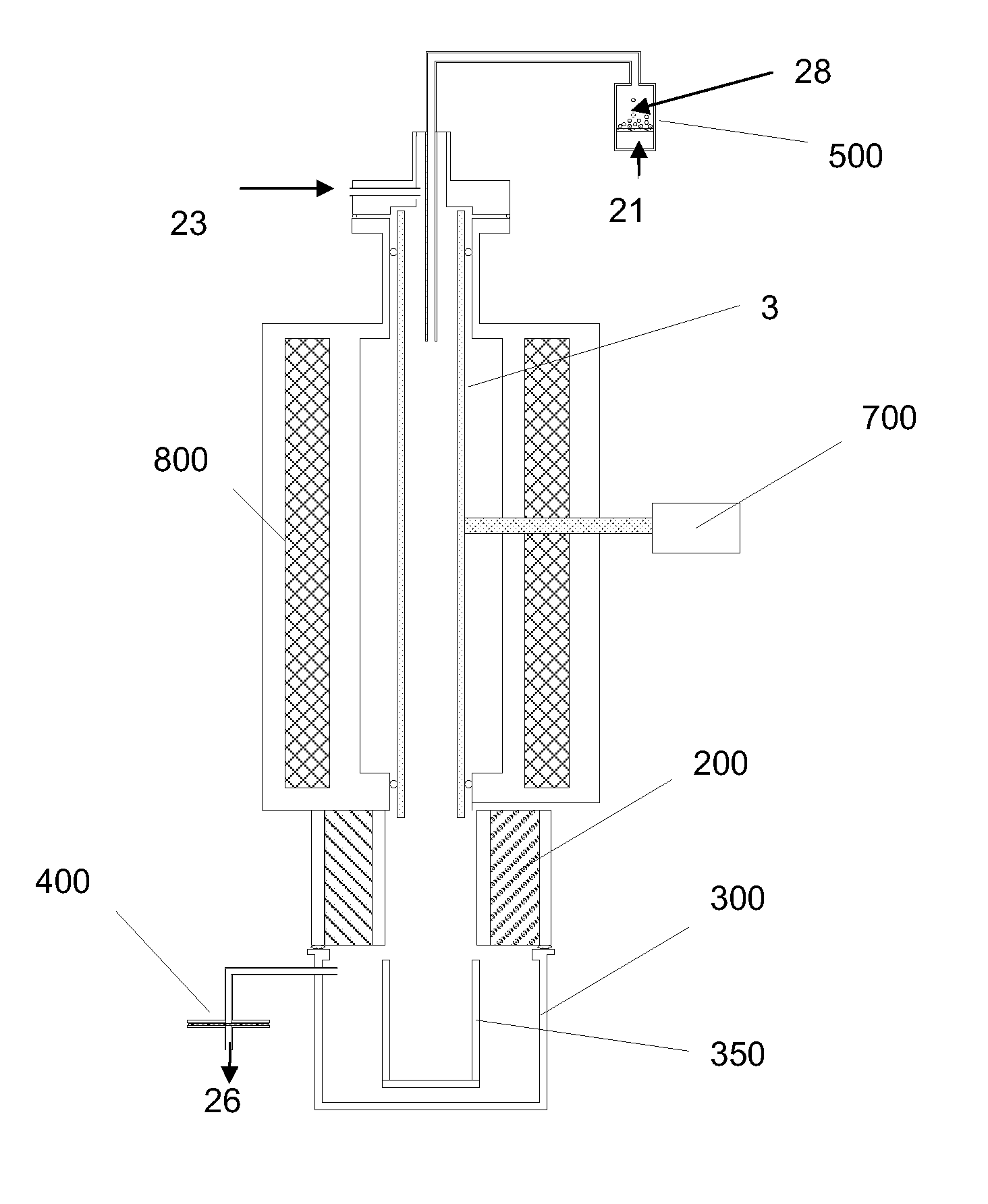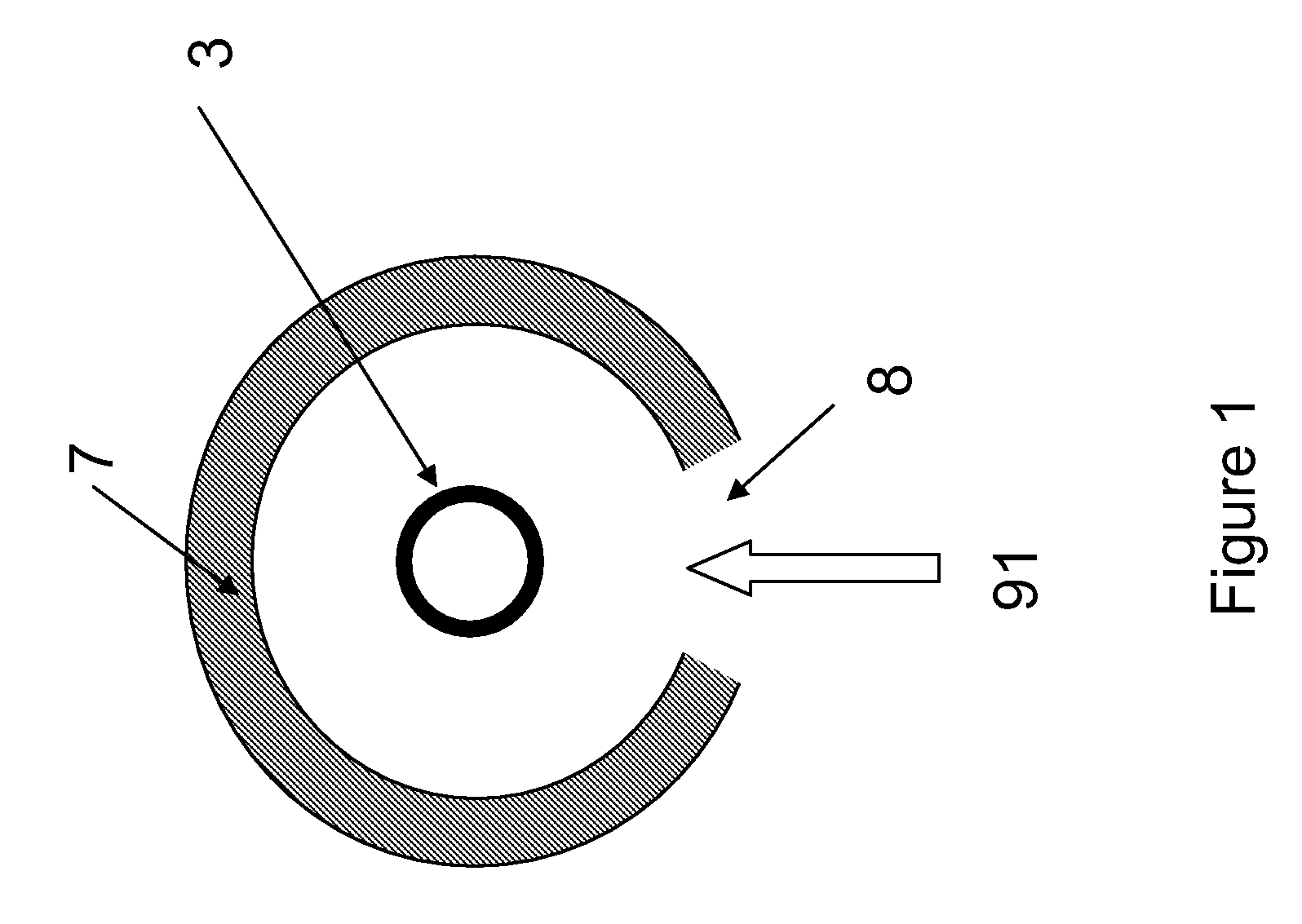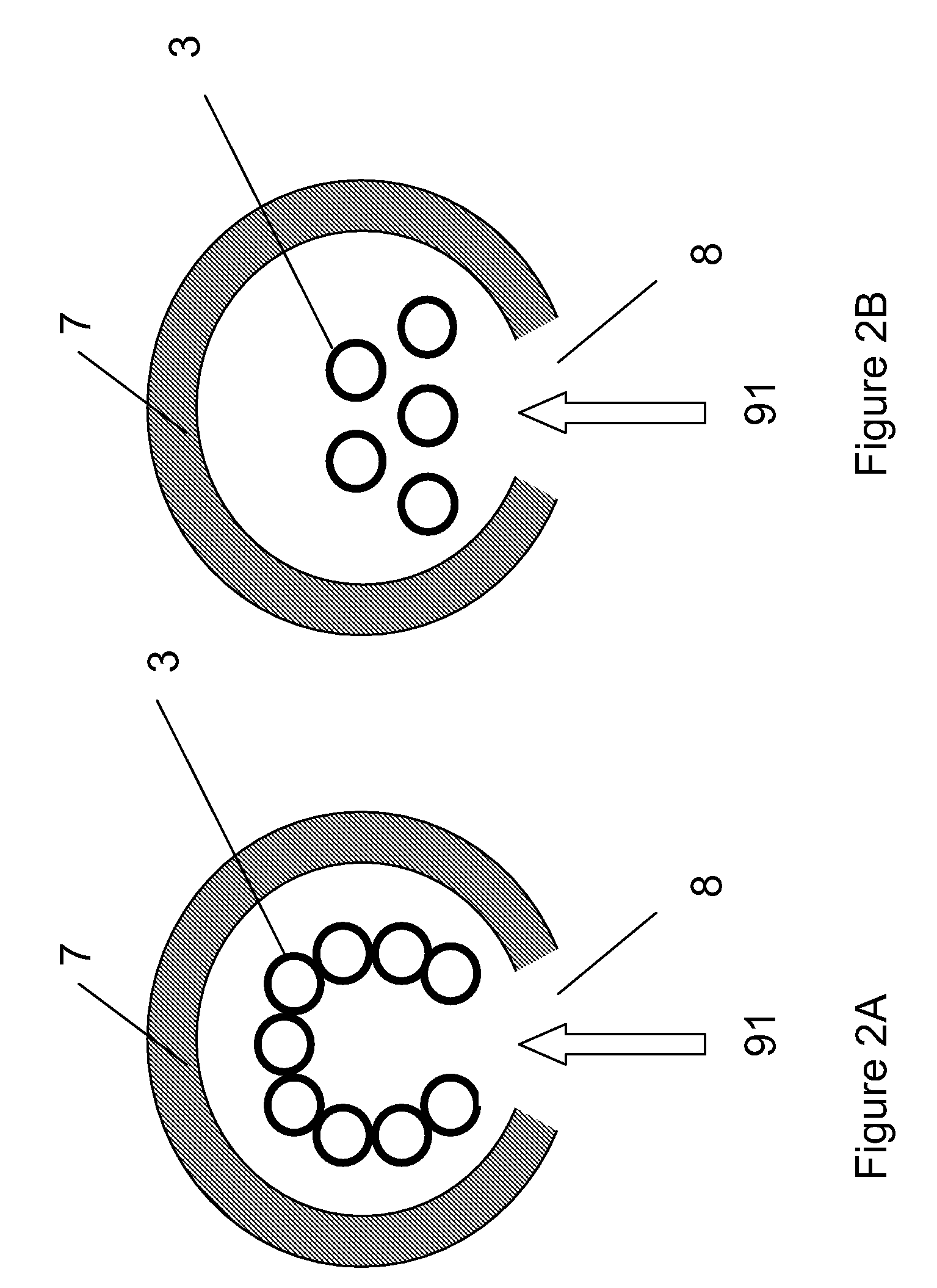Rapid solar-thermal conversion of biomass to syngas
a solar-thermal conversion and biomass technology, applied in the field of solar biomass gasification and pyrolysis, can solve problems such as major concerns in loss, achieve the effects of accelerating reaction kinetics, increasing reaction rate, and widening the range of thermodynamic regimes availabl
- Summary
- Abstract
- Description
- Claims
- Application Information
AI Technical Summary
Benefits of technology
Problems solved by technology
Method used
Image
Examples
example 1
Cellulose Gasification in an Electrically Heated Aerosol Transport Tube Reactor
[0106] Cellulose was combined with water vapor in an electric tube furnace at temperatures between 1200 K and 1450 K. The cellulose was composed of fine particles (Sigma-Aldrich #310697, 20 μm) with a monomer unit shown in FIG. 3. The reactor apparatus is shown in FIG. 4. The reactor consisted of a 99.8% Alumina tube (3) (McDanel Technical Ceramics), 3.635″ in internal diameter by 45″ in length. This tube was heated indirectly using a surrounding electrically heated graphite resistance element (800). The interior of the Al2O3 tube was sealed from the outer graphite element and purged with argon gas to eliminate oxygen. Particles of cellulose were placed in a fluidized bed feeder (500); fluidization gas (21) (argon) entrained the particles, carrying them into the hot reactor, where they were combined with water vapor (23). The water flowrate was controlled by a syringe pump, and the water was introduced i...
example 2
Lignin Gasification in an Electrically Heated Aerosol Transport Tube Reactor
[0112] Lignin was combined with water vapor in an electric tube furnace at 1450 K. The lignin was composed of fine particles (Sigma-Aldrich #371017, 20 μm) with a monomer unit shown in FIG. 6. The reactor was the same as in Example 1. The interior of the Al2O3 tube was sealed from the outer graphite element and purged with argon gas to eliminate oxygen. Particles of lignin were placed in a fluidized bed feeder; fluidization gas (argon) entrained the particles, carrying them into the hot reactor, where they were combined with water vapor. The water flowrate was controlled by a syringe pump, and the water was introduced into the hot reactor environment through a capillary tube.
[0113] After leaving the heated portion of the reactor, the reaction products were passed through a gravity collection vessel and an HEPA filter (200 nm pore size). Large particles would be collected in the gravity vessel, with smaller...
example 3
Cellulose and Lignin Pyrolysis in an Electrically Heated Aerosol Transport Tube Reactor
[0116] Cellulose and lignin were pyrolyzed in an electric tube furnace at temperatures between 1200 K and 1450 K. Each material was fed in separate experiments. The cellulose was composed of fine particles (Sigma-Aldrich #310697, 20 μm) and the lignin was also composed of fine particles (Sigma-Aldrich #371017) The reactor apparatus is similar to that in Example 1. The interior of the Al2O3 tube was sealed from the outer graphite element and purged with argon gas to eliminate oxygen. Particles of cellulose or lignin were placed in a fluidized bed feeder; fluidization gas (argon) entrained the particles, carrying them into the hot reactor, where they joined by sweep argon gas to control residence time.
[0117] After leaving the heated portion of the reactor, the reaction products were passed through a gravity collection vessel and an HEPA filter (200 nm pore size). Large particles would be collected...
PUM
| Property | Measurement | Unit |
|---|---|---|
| volume average equivalent spherical particle diameter | aaaaa | aaaaa |
| volume average equivalent spherical particle diameter | aaaaa | aaaaa |
| temperature | aaaaa | aaaaa |
Abstract
Description
Claims
Application Information
 Login to View More
Login to View More - R&D
- Intellectual Property
- Life Sciences
- Materials
- Tech Scout
- Unparalleled Data Quality
- Higher Quality Content
- 60% Fewer Hallucinations
Browse by: Latest US Patents, China's latest patents, Technical Efficacy Thesaurus, Application Domain, Technology Topic, Popular Technical Reports.
© 2025 PatSnap. All rights reserved.Legal|Privacy policy|Modern Slavery Act Transparency Statement|Sitemap|About US| Contact US: help@patsnap.com



